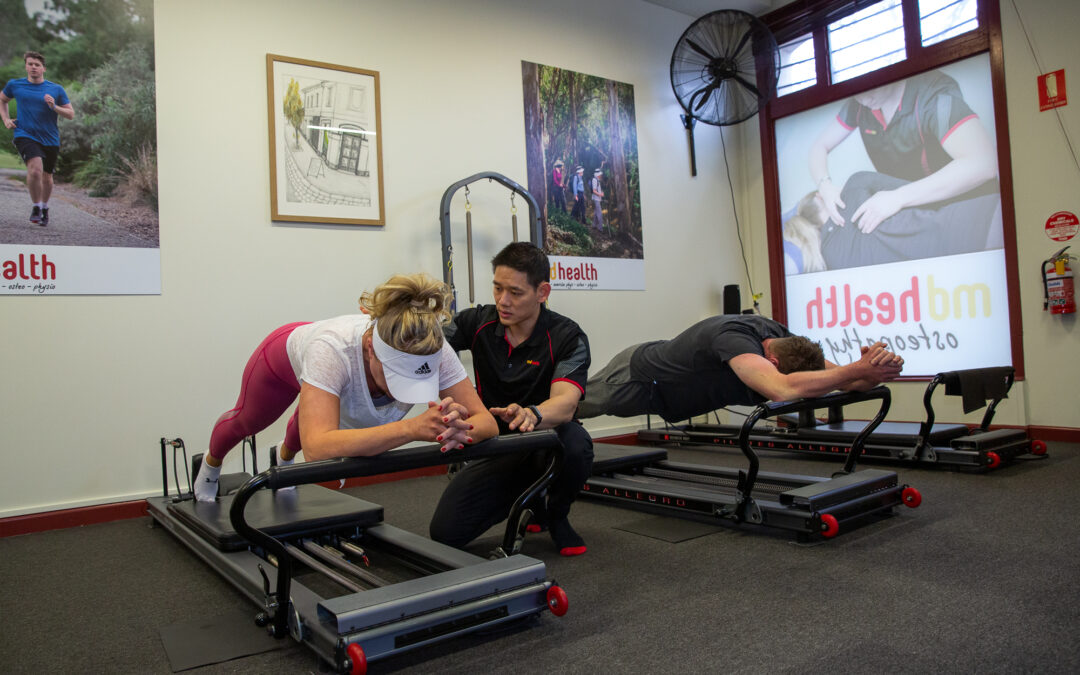Following Nicholas’ rehabilitation after his disc prolapse, we have been working hard to determine the best way to incorporate some of the additional core stability training, in particular, Multifidus training, as part of everyone’s Pilates program over the next few months.
So why is this important?
What Does Multifidus Do?
The Multifidus are a small group of back muscles which make up some of the deepest layers of the back muscles.
In particular, they make up the ‘Local Stabilising system’ of the lumbar spine, which means their major role is to keep one vertebrae (eg the top vertebrae) ‘stable’ over the other vertebrae (eg the bottom vertebrae), so that the power muscles, such as the erector spinae muscles can move the spine safely.
In other words, the multifidus control the amount of glide one vertebrae has over the other. If this is ‘uncontrolled’, it puts pressure on the support structures such as the discs and facet joints, causing injury.
Source: https://www.coreconcepts.com.sg/mcr/wp-content/uploads/2009/03/multifidus.jpg
How Does Multifidus Differ From The Abdominal (Transversus Abdominus) Muscles In Core Stability?
These muscles work together, but are not the same thing. The Transversus abdominus muscle wraps around the body and attaches onto the spine indirectly through a thick layer of connective tissue called the thoraco-lumbar fascia.
The multifidus muscle attaches directly on the lumbar spine and has a more direct action in maintaining core stability.
Multifidus also attaches onto the thoraco-lumbar fascia, so the muscles are linked and enhance each other’s actions
How Do We Train Multifidus?
We can now view multifidus directly on ultrasound. Viewing the activation of this muscle will now become a standard part of your re-assessment and we will work on teaching everyone how to contract this muscle during their Pilates sessions over the next couple of months
Source: https://www.coreconcepts.com.sg/mcr/wp-content/uploads/2009/03/multifidus.jpg
To Re-train These Muscles
• Kneel onto your hands and knees
• Make a small arch in the lower back
• ‘Squeeze’ the muscle of the lower back ‘in towards each other’. You should feel the muscle in the lower back puff up. Hold for 3 second
Don’t worry, we will be practicing these exercises during your Pilates sessions
Written by Nicholas Charalambous
Physiotherapist at MD Health



